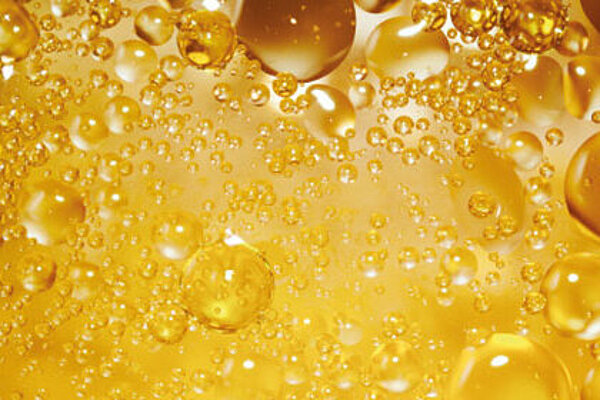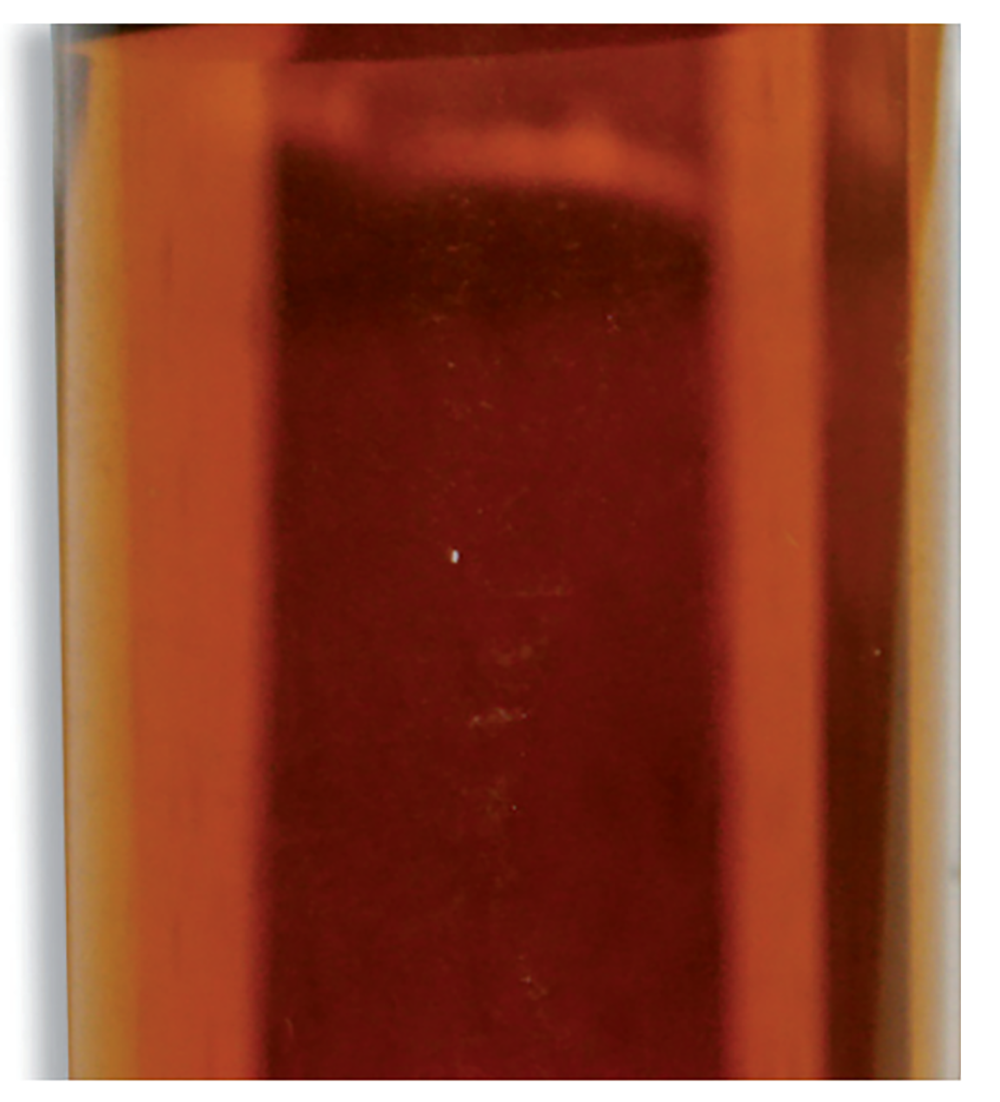Mixing of lubricants and additives
The formulation of a lubricant is comparable to the preparation of a good cocktail. Selected ingredients are used to create a Pina Colada, while other ingredients, some of which are the same or similar, are used to create a Bloody Mary. Each cocktail is a treat in itself. But no one would think of mixing the two - the result would be inedible. Similar results can also occur when mixing lubricants.

Table of contents
Base oil and additives
Modern lubricants are made from a variety of "ingredients". The basis is a base oil, which is contained in the end product at a rate of far more than 50%. Paraffin-based mineral oils, which are obtained from crude oil distillates in a lubricating oil refinery, are the most commonly used. Synthetic base fluids are used especially when properties such as biodegradability, high aging stability or improved viscosity temperature behavior are required.
Base oils overview
| Mineral oil raffinate | Vacuum distillate of the crude oil |
| Hydrocracking oil | "Heat-treated" mineral oil with optimized molecular structure |
Poly-α-Olefin (PAO) | Synthetic base oil with paraffinic base structure |
| Ester | Synthetic and natural liquid obtained from alcohol or acid |
| Glycols | Polyhydric alcohol obtained synthetically from petroleum or coal |
| Silicone oil | Synthetic liquid (polydimethylsiloxane PDMS) |
| Perfluorinated hydrocarbons | Synthetic oil based on perfluorinated polyether oils (PFPE, fluoropolymers) |
| Alkylbenzene | Synthetic oil based on aromatic hydrocarbonsfe |
| Bone oil | Lubricating oil obtained from bone for precision mechanical drives |
In most cases, the base oil alone is not sufficient to cover the wide range of tasks that an oil has to perform for the application in question. For reliable lubrication and to ensure long-term and smooth operation, individual additions or even complex combinations of active ingredients, so-called additives, are added to the base oils. This "alloying" of the oil can enhance existing properties of the base oil or give completely new properties to the final product. The list of different additive components is long.
Overview additives
| Corrosion protection additives | Protection of the metallic surfaces against attacks by moisture and acids or alkalis |
| Wear protection additives | Avoiding direct contact of the metallic surfaces in the mixed and boundary friction area |
| Oxidation protection additives | Prevent or slow down oil oxidation. Therefore, they delay oil aging and extend the service life of the oil. |
| Detergents/ dispersants | Achievement of dirt removing and dirt carrying capacity (e.g. soot, sludge, water) |
| VI improvers | Optimization of viscosity-temperature dependence |
| Anti-foam additive | Improvement of foaming properties |
| Swell Agents | The behavior of the oil towards sealing materials is precisely adjusted |
| Friction coefficient modifier | Precise setting of a required friction coefficient characteristic |
Depending on the requirements, the individual additive components are usually combined to form an additive package. During blending, the active ingredients and additive packages are added to the base oil, which is heated to 40 °C to 60 °C, and intensively stirred or swirled until they are completely dissolved in the oil. For engine oils, the additive content can be up to 20%, for hydraulic oils less than 1%.
Mixing different oils
Mixing different oil types, such as engine oil with hydraulic oil or compressor oil with gear oil, is not permitted, even if the base oil is the same and the viscosity is similar. In the industrial sector, mixtures of the same oil types, such as CLP gear oils from different oil manufacturers, should also be avoided if the additives or base oil basis of these oils are unknown.
The experienced tribologists at OELCHECK are repeatedly confronted with the problems and questions described in their daily work. Not least through the experience gained by assessing thousands of samples, they know that mixing or contamination of one lubricant with another manufacturer's oil or with a different type of oil is one of the main causes of plant problems. A fundamental distinction must be drawn between miscibility and compatibility. Oils with the same base oil, similar viscosity and comparable density can principally be mixed with each other. However, whether they are also compatible with each other depends essentially on their additives.
Miscibility
Miscibility
describes a chemical property. Two liquids are truly miscible when they easily dissolve completely into each other
Compatibility
means that two oils can be mixed together, but they still retain their individual properties..
Miscibility is usually the property that is readily confirmed by the supplier and is relatively easy to meet as a basic requirement. Information on the compatibility of lubricants is not so easy to obtain. Before mixing oils with different designations, it should be clarified whether the same or similar additive packages are used in addition to the same base oil. For example, HLP hydraulic oils according to DIN 51524, which can be formulated with zinc-containing or zinc-free additive combinations, are always miscible with each other, but are only compatible in the rarest of cases.
If, for example, incompatible oils are mixed during an incomplete oil change, the following problems may occur:
- Increased formation of surface foam
- Deteriorated air-release properties
- Increased risk of cavitation
- Seal wear
- Changed behavior towards water
- Affected demulsifying or emulsifying properties
- Changed friction characteristics
- Changed wear protection behavior
- Greater system contamination due to dissolved deposits
- Deteriorated filterability or decrease in filter service life
- Increased formation of deposits due to additive reactions
Some basic rules should be observed during a changeover according to the following test scheme. This can reduce any problems caused by incompatible oils.
1st Level: First, it is checked whether the products to be mixed have been produced with similar base oils. If this is the case, viscosity and additives must still be checked If the base oil types are different, re-oiling guidelines must be followed to ensure that the tramp oil content remaining in the system is less than 2%.
Please note: Mixing of oils with different base oils should be avoided if possible.
2nd Level: If the oils match in terms of the base oil type, a comparison of the viscosities, e.g. at 40 °C, is appropriate. It is one of the most important oil properties and is largely responsible for the formation of the lubricating film.
However, for oils with different viscosities, the viscosity does not change linearly with the ratio of the blend components. The viscosity expected from mixing must be calculated with a special program (Viscosity Manager, MobilCalc). After that, it must be decided whether the viscosity to be expected from the mixture can be tolerated.
3rd Level: The most difficult part is the comparison of additive packages. Specialized knowledge about the exact structure of the formulation is often necessary here. A comparison of the data provided by the oil manufacturer in safety data sheets or product information is usually not sufficient for this purpose. In addition to the analysis of the two comparative products with the question "compatibility test", you will receive a laboratory report from the experienced OELCHECK tribologist, in which the additives are quantified and a possible incompatibility is commented.
There are also some generally applicable references, e.g. in product information, which can be used for an initial estimate:
- Are markings according to DIN or ASTM standards comparable, are the same requirement standards (HLP, CLP, TD-L, SAE, API, ACEA) fulfilled?
- Do the oils meet the same general specifications, are they approved by the same equipment manufacturers?
- Are the same mechanical test procedures (FZG test, four ball test, Brugger, FE8, foam test) met?
- Are characteristic values such as viscosity, viscosity index, density, ash content or flash point comparable?
Do not mix the following oils:
- Zinc-free and zinc-containing hydraulic and circulating oils
- Oils with detergent and non-detergent properties
- Glycol-based synthetic oils with all other synthetic oils
For a detailed compatibility assessment, the oil manufacturer's technical service is usually available for (hopefully written) information.
How to avoid mixing
You can specifically reduce the risk of unwanted mixing during everyday handling of oils.
- Unfortunately, the long names of different lubricant brands from the same oil manufacturer often differ only insignificantly by a letter or number. Precise incoming goods inspection detects faulty deliveries in good time.
- An organized oil storage facility with designated storage locations for each lubricant type minimizes the risk of confusion.
- A separate oil refill can, marked with a different color, should be used for each type of oil. The oil filler neck should also be the same color.
- Each lubricated point should be listed in a lubrication schedule with the brand designation of the oil.
Oil spreading occurs time and again because mobile attachments are used. Even if mobile bypass filters are connected to units filled with different oils, residual quantities remain in the filter system, even when the filter cartridges are changed, which can lead to incompatibilities. To avoid time-consuming and error-prone flushing procedures, separate filter cards should be used at least for different oil types. For example, you can avoid mixing zinc-free hydraulic oils with hydraulic oils containing zinc.
Additional tips
- Oil analyses show the compatibility risk
Based on oil analyses, OELCHECK can compare the performance profiles of lubricants, which are often opaque to the consumer, and make statements about their compatibility.
The experienced tribologists can provide you with specific and individual advice on the changeover of lubricants. Among other things, they indicate whether sufficient experience with the lubricants in question is available or whether a prior oil analysis is required to assess compatibility.
When storing and handling lubricants, you can eliminate the risk of mixing and many other sources of error in advance.
This topic is covered in detail in the OilDoc seminar "Professional lubricant management".






